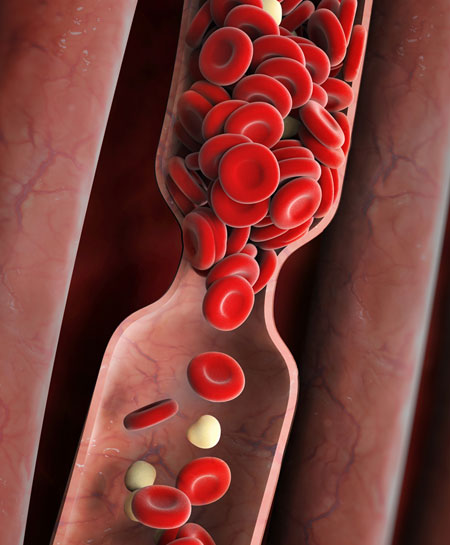Call me - +30 6944.237.080 - +30 210.86.20.001

COVID 19 and Vein Thrombosis
COVID-19 presents a wide range of symptoms, primarily affecting the respiratory system but also impacting other systems such as the cardiovascular and nervous systems.
Over time, extensive research has been conducted on the disease. While our understanding is still evolving, COVID-19 has been strongly linked to blood clotting disorders, leading primarily to venous but also arterial thrombosis. These complications contribute to worse outcomes and increased mortality. The underlying mechanism involves significantly elevated levels of inflammation and coagulation activity, referred to as thrombo-inflammation. This process is believed to cause small blood clots, which can lead to respiratory failure and the need for mechanical ventilation.
Endothelial cells appear to be a primary target of COVID-19. Endothelial damage and its associated structural and functional changes play a crucial role in the hyperinflammatory response triggered by the virus, which can result in severe disease progression. On one hand, the virus itself induces blood clots, increasing disease severity. On the other hand, prolonged hospitalization, immobility, ICU admission, underlying serious health conditions, and advanced age further elevate the risk of thrombosis.
Key Points You Need to Know:
- Thrombosis refers to the formation of a blood clot within the circulatory system (arteries or veins), which disrupts normal blood flow.
- The incidence of thrombosis in COVID-19 patients varies in scientific literature. Some studies report rates between 20-30%, while others suggest figures as high as 40-70%. More research and data are needed. These findings primarily apply to severely ill, hospitalized patients.
- Patients who develop blood clots tend to experience more severe COVID-19 progression, often requiring hospitalization or ICU care. The majority belong to high-risk groups and are of older age.
- The most common types of thrombosis in these patients are deep vein thrombosis (DVT) and pulmonary embolism (PE), especially in those requiring hospitalization. These risks increase even further for ICU patients.
- Thrombosis can occur anywhere in the body during COVID-19 infection. Autopsies of COVID-19 patients have revealed clots in multiple organs.
- Prevention and treatment involve appropriate anticoagulation therapy administered to patients as needed.
- Arterial thrombosis is more serious than venous thrombosis and may require surgical intervention along with medical treatment. The treating physician, in collaboration with a vascular surgeon and other medical specialists, will determine the best course of action based on clinical, laboratory, and imaging findings.
- While we have made significant progress in understanding these mechanisms, further research is required to fully clarify the disease pathways and establish definitive treatment protocols.
- More time and additional data and studies are needed. These pertain to patients who have been severely ill and required hospitalization.
